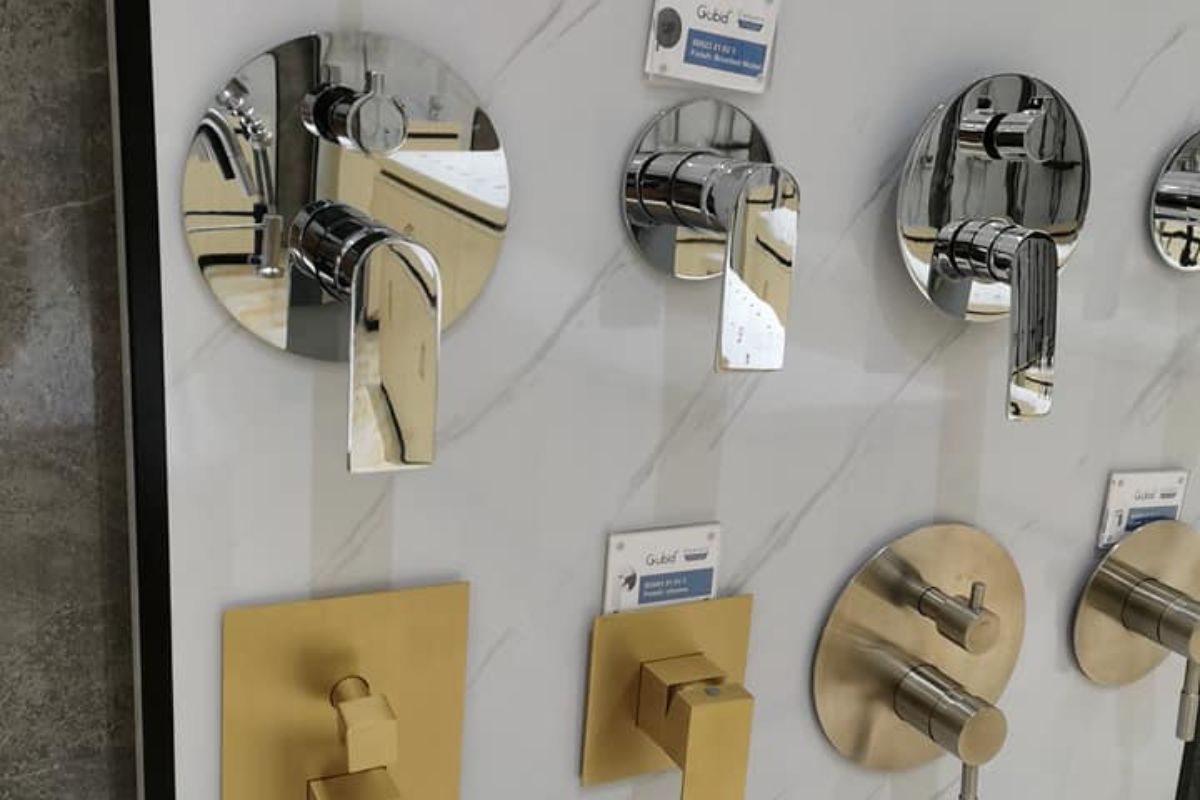Shower valves are a bit complicated because there are a few different options, and it’s hard to know how they work and which ones are the best. Today, I will cover the different types of shower valves there are and the benefits and drawbacks of each.
In general, there are 3 main types, manual, sequential, and thermostatic. Each of these types of shower valves are available in either exposed or concealed versions. A concealed shower valve only has turn knobs, whereas, an exposed shower valve is visible on the exterior of the wall.
It can be a bit confusing at first what the difference is between an exposed and concealed shower valve because most shower valves you will have seen look largely the same. Below, I will provide a full explanation of the difference between each of the different shower valves.
The Two Main Types of Shower Valves and How They Differ
There are two main types of shower valves:
- Manual
- Mixer shower valves also called thermostatic
Manual shower valves only come in one design. Whereas, mixer shower valves are of four main types:
- Single lever
- Sequential
- Concentric
- Dual control
Manual shower valve pros and cons
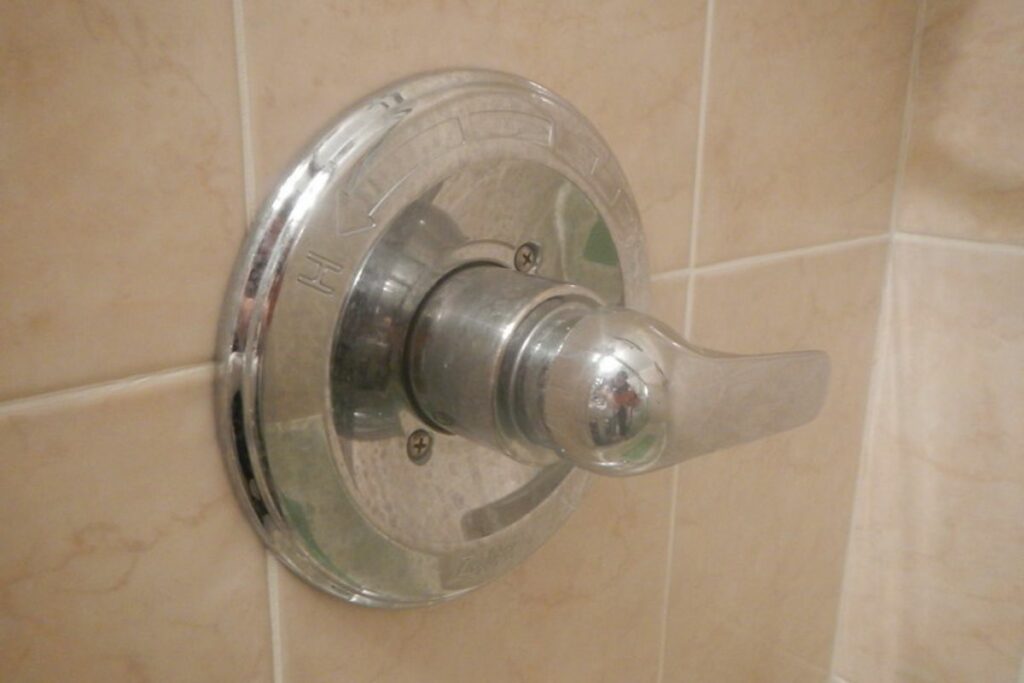
A manual shower valve is the easiest to understand. The hot and cold water flow into the shower head. And the levels of each can be adjusted using the hot and cold water taps. These are the oldest type of shower valves and are most commonly found in older homes. Or, in homes where people have a personal preference for them.
The advantages of a manual shower valve are:
- Simple design – easy to install
- Very few moving parts – easy to fix if there’s a problem
- Cheap – simple design means it’s cheaper than the other more complicated shower valves
The disadvantage of a manual shower valve are:
- You need to adjust and find the right temperature every time you use it
Manual shower valves are the most difficult to adjust compared to the other types of shower valves. When you turn the hot water tap, and the cold water tap, you need to fine-tune how much each of them is turned until the temperature is just right.
The main drawback of a manual shower valve is you need to get the right shower water temperature each time, by fine-tuning the taps. Whereas, with thermostatic shower valves, the temperature stays in position, so you rarely need to adjust it.
Exposed versus concealed manual shower valve
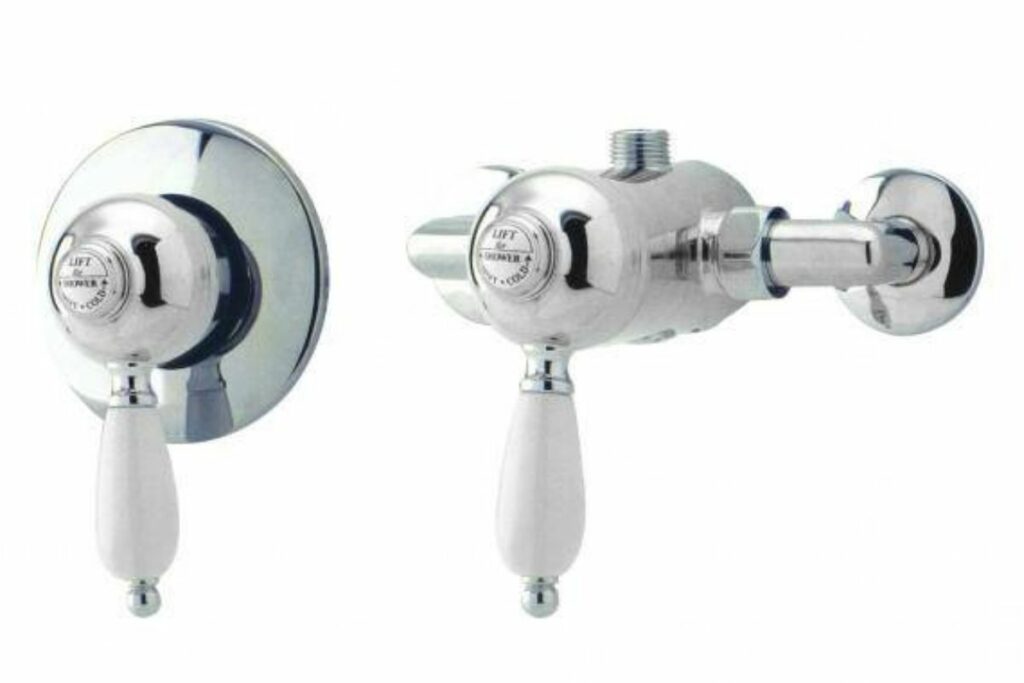
A concealed manual shower valve will only have two tap handles visible on the wall. Typically, they will be on the wall below the shower head. An exposed manual shower valve will have a metal pipe-type fixture with hot and cold water taps on either end.
The metal pipe fixture for an exposed manual shower valve is about 6 inches (15 cm) in width and one inch (2.5 cm) in diameter. An exposed manual shower valve is MUCH easier to repair or replace. The reason is the valve is fully exposed, and not located behind the wall.
Mixer (thermostatic) shower valve pros and cons
As mentioned, there are 4 broad types of mixer showers. But, they all have similar advantages and disadvantages over a manual shower. Mixer shower valves are a newer type of shower valve. But, are nowadays very commonly found in homes, gyms, and hotels.
The advantages of a thermostatic shower valve are:
- It can save the temperature from the last shower
- The temperature doesn’t need to be adjusted very much if at all
- Simple to adjust the temperature
- Has a more modern-looking design
The disadvantages of a thermostatic shower valve are:
- Is a bit confusing to use at first
- Is more expensive than a manual shower valve
Here’s a really good video that shows what each of the mixer shower valves look like:
Single lever mixer shower valve
A single lever shower is very easy to operate. You lift it up to cause the water to come out. The higher it’s lifted the higher the shower pressure will be. If it’s pushed down low close to where it’s completely closed the water will only trickle out.
The temperature of the shower is adjusted from left to right to turn it up and down. In the middle is warm. In one direction is completely cold, and in the other direction is as hot as it will go.
Sequential mixer shower valve
This type of shower valve is very different. Rather than having an adjustable water pressure, it has a constant pressure. You turn the knob to turn the shower water on. Once, it’s turned all the way on, the temperature can be adjusted by continuing to turn the knob. The further you turn it the hotter the shower gets.
One disadvantage of a sequential mixer shower valve is that it doesn’t save the temperature from the last shower. However, after you use it a few times you will remember about how far to turn the knob to get it to the right temperature.
In my opinion, this type of shower valve is not the best. The reason is there is no visual way to remember how far the knob should be turned. Unlike, a single lever shower where you know roughly at the 5 o’clock position is perfect. You need to do it by feel.
Concentric mixer shower valve
A concentric mixer shower is very different again. Instead of one knob/lever, it has two. But, both are located on one valve. Usually, one knob is in the center, and the other knob is behind it.
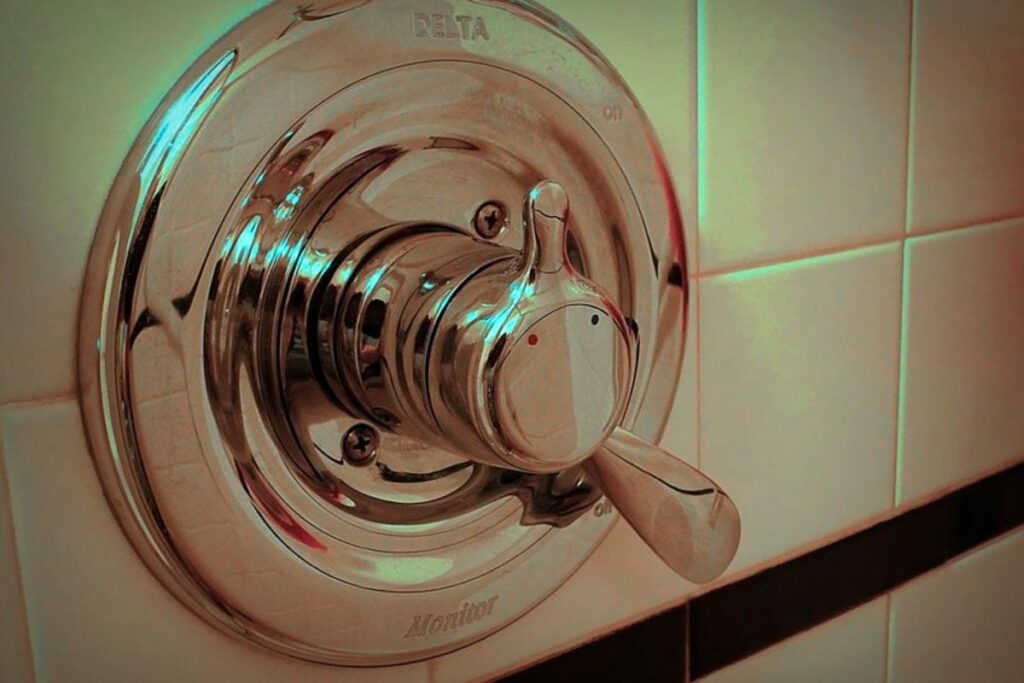
One knob turns the water on, and the pressure can be adjusted up and down. The other knob controls the temperature. You turn it one way to make the shower hotter, and the other way to make it cooler.
This shower valve does take a little bit of getting used to because it has two controls. But, overall is very good. A big advantage of a concentric mixer shower is you can leave the temperature control knob where it is.
This means it remembers the temperature. Therefore, you don’t need to adjust the temperature each time you have a shower. Instead, you only turn the knob to adjust the water pressure.
However, it can be a bit of a pain if you forget which knob is which. And turn the wrong knob and change the temperature instead of the water pressure.
Dual control mixer shower valve
A dual control mixer shower valve is very similar to a concentric mixer shower valve. It has two separate knobs. One is used to adjust the temperature, and the other is used to adjust the water pressure. It’s very simple to use, and easy to understand.
A really big advantage of a dual mixer shower valve is that the temperature setting is saved. Provided, you don’t turn the temperature knob in between uses, you can simply turn the knob that adjusts the shower pressure.
Types of shower valves for two shower heads
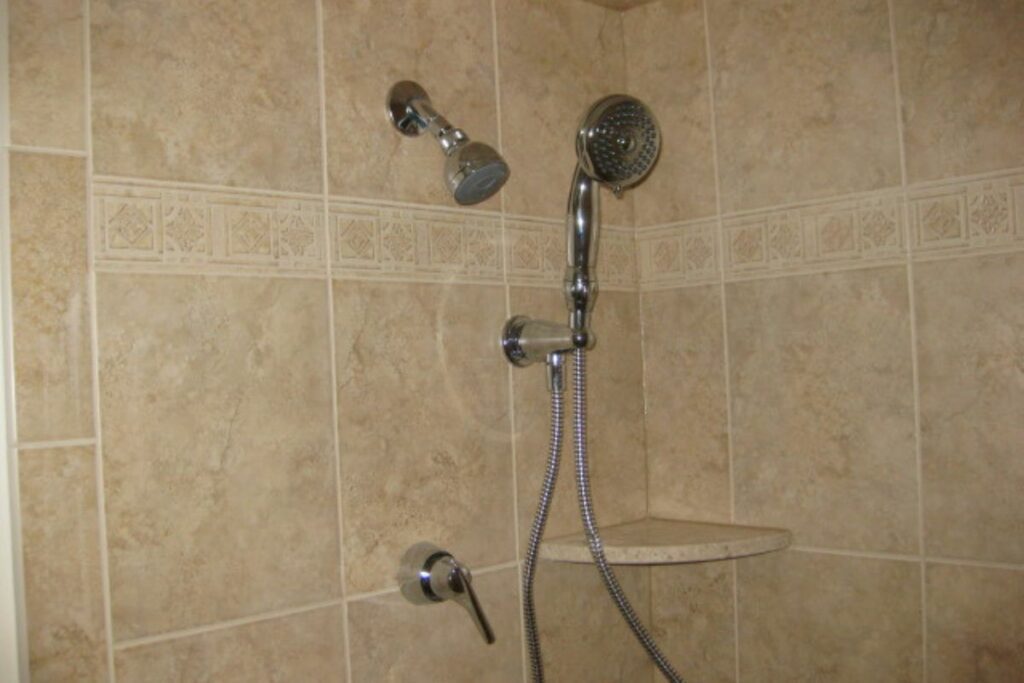
It’s not too uncommon to have an overhead shower and a detachable shower head. A detachable shower head can also be installed on a bar. And the height can be adjusted up and down. This can be good for children who are a lot shorter than adults. So, they can reach the detachable shower head.
The main difference with this type of setup is the shower valve will need to have a separate knob, that controls the water going to either shower head. Typically you can have a setting to:
- Send water only to the overhead shower
- Send water to both the detachable shower head AND the overhead shower head
- Send water only to the detachable shower head
This will be built into the shower valve you get. But, is a key consideration.
What Types of Shower Valve Is the Best
There are quite a few options for different types of shower valves. Some are better than others. So, here’s the rundown on what type of shower valve is the best.
Overall, a mixer shower valve, that is either a single lever, concentric, or dual control is the best. Sequential mixer shower valves or manual valves are still OK. But, they don’t save the previous temperature set so you don’t need to adjust it at all if you’re the only person using the shower.
With a manual and sequential mixer shower valve over time, you can also get to know where to position the temperature knobs should be. So, it isn’t too much of an issue. But, the other types of shower valves are more convenient and easier to get the shower temperature how you want it to be.
What Is a Triple Shower Valve
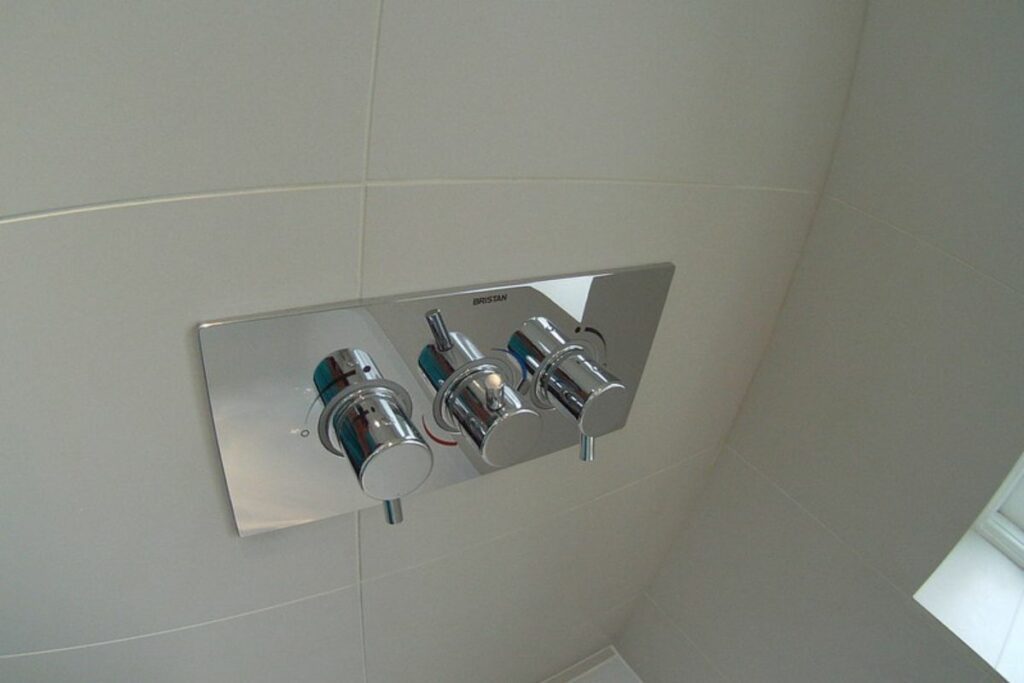
Triple shower valves are a bit confusing because it’s hard to know why so many valves are needed. Below, is what a triple shower valve is, and if they’re any good.
A triple shower valve is a mixer shower valve that has three separate controls, one for the water pressure, one for the water temperature, and another one to divert the flow of water to the bath tap, or a separate detachable shower head.
Overall, a triple shower valve is good. And a shower valve with a knob to divert water from the overhead shower valve to a detachable shower is required. Otherwise, it’s typically a waste of water to have the detachable shower head on, when it’s not in use.
Other designs will have this valve somewhere on the main shower valve. For example, some have a pin-type mechanism that pulls outwards to divert the water to a bathtub tap, or to a detachable shower.

Amos Christen graduated with a bachelor’s degree in Interior Design from Drexel University — Philadelphia, PA. Since 2003, Amos has worked with top interior design professionals in this area, including architects and interior/graphic/lighting designers. As a skilled interior designer, Amos Christen is highly versed in fine arts and crafts and uses that to supplement his main area of expertise. He often publishes articles related to home décor on several websites, including Sprucetoilets.com, Sprucebathroom.com, and Mybesuitedhome.com. He also contributes to leading interior design magazines.
